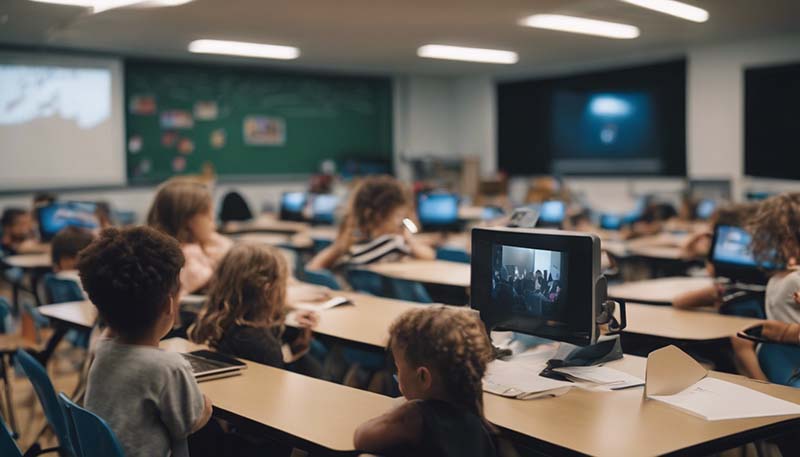Breaking Boundaries: How Technology is Transforming Classrooms
Technology has been a driving force in transforming various aspects of our lives, and education is no exception. The integration of technology in classrooms has revolutionized the way teachers teach and students learn. This article explores the various ways in which technology is breaking boundaries and transforming the educational landscape.
1. Personalized Learning
One of the most significant impacts of technology on education is the ability to provide personalized learning experiences. With the help of adaptive learning software, teachers can tailor their lessons to meet the individual needs of each student. This approach allows students to learn at their own pace and focus on areas where they need the most improvement.
2. Access to Global Resources
Technology has made it possible for students to access a wealth of information and resources from around the world. With just a few clicks, students can access online libraries, research papers, and educational videos. This global access to information has not only expanded students' horizons but also enhanced their learning experience.
3. Interactive Learning Tools
The use of interactive learning tools such as virtual and augmented reality has brought a new level of engagement to the classroom. These tools allow students to immerse themselves in the subject matter, making learning more enjoyable and memorable. For example, students can virtually explore historical sites, conduct experiments in a virtual lab, or even travel through the human body.
Advertisement
4. Collaborative Learning
Technology has made it easier for students to collaborate and work together on projects. With the help of online collaboration tools, students can work together in real-time, share ideas, and give feedback to one another. This collaborative approach fosters teamwork and helps students develop essential communication and problem-solving skills.
5. Flipped Classroom Model
The flipped classroom model is an innovative teaching approach that has gained popularity thanks to technology. In this model, students watch video lectures or complete online assignments before coming to class. Class time is then used for interactive discussions, group work, and problem-solving activities. This approach allows students to learn at their own pace and gives teachers more time to address individual student needs.
6. Online Learning Platforms
The rise of online learning platforms has made education more accessible to people around the world. These platforms offer a wide range of courses, from basic subjects to specialized fields, allowing students to learn at their convenience and at their own pace. Online learning also provides opportunities for students to connect with peers and instructors from different parts of the world, promoting cultural exchange and global understanding.
7. Gamification
Gamification is the use of game elements and design techniques in non-game contexts. In education, gamification has been used to make learning more engaging and motivating. By incorporating elements such as points, badges, and leaderboards, teachers can encourage students to participate more actively in class and stay motivated to achieve their learning goals.
8. Data-Driven Insights
Technology has made it possible for educators to collect and analyze data on student performance. This data can provide valuable insights into students' learning habits, strengths, and weaknesses. With this information, teachers can make more informed decisions about their teaching strategies and tailor their lessons to better meet the needs of their students.
9. Professional Development
Technology has also transformed the way teachers continue their professional development. Online courses, webinars, and educational conferences allow teachers to stay up-to-date with the latest teaching methods and technologies. This ongoing professional development is crucial for teachers to remain effective and relevant in the ever-evolving educational landscape.
10. Inclusive Education
Technology has played a significant role in making education more inclusive. Assistive technologies, such as speech-to-text software and screen readers, have made it possible for students with disabilities to access the same educational opportunities as their peers. Additionally, online learning platforms have made education accessible to students who may not have the means or opportunity to attend traditional schools.
Conclusion
The integration of technology in classrooms has significantly transformed the way education is delivered and experienced. By breaking down traditional boundaries, technology has made education more personalized, accessible, and engaging. As technology continues to evolve, it will undoubtedly bring about even more innovative ways to enhance the learning experience and further transform the educational landscape.
